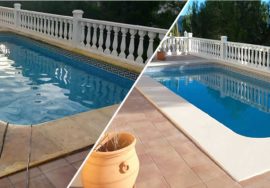
The ITE or Building’s Technical Inspection
The ITE or Building’s Technical Inspection
In the last months of the past year town halls have been increasingly notifying property owners and communities about the obligation to provide a technical inspection of the buildings, with the warning of hefty fines.
More and more, this technical inspection is converting into an essential document of every purchase operation, or decisive in obtaining a mortgage. It is a mandatory document, in order to apply for subventions from the administration.
What is an ITE?
The ITE is an inspection carried out by an architect or civil engineer, in order to check the state of the building and the owner’s obligation to maintain and if necessary to restore it. It is described in the general Spanish law 8/2013, whose goal is to promote urban regeneration, renovation and restoration of existing buildings.
Which are the affected buildings?
Every building more than fifty years old must be checked according to the law. The ITE has been primarily oriented to communities of owners and housing blocks, but also terrace, detached houses and villas are included and must be checked as well. The final report has a validity of ten years.
What is the content of the ITE?
These are the main points needed to be included in the ITE.
- Evaluation of the maintenance state of the building.
- Evaluation of the universal accessibility conditions and the non-discrimination of disabled people.
- The energy performance certificate of the building.
What are the inspection points?
After a first visit the surveyor has to check for possible pathologies affecting the structure of the building, façades and roofs, the security in communal areas, thermal and waterproof insulation, drain, water, electricity and gas installations, as well as the accessibility conditions from the exterior and in the interior spaces.
In blocks or communities of owners, access to each independent unit will be necessary in the case when structural pathologies would be detected in the communal areas.
An ITE pass or fail?
In the case where the surveyor doesn’t find any structural pathology or aspects to be corrected in terms of security or accessibility, the ITE will pass. The same surveyor will complete the process of submitting the final report to the administration.
In the case of structural pathologies, deficient state of installations, and serious damages, the ITE will fail. The owner will be asked to assume the reparations according to the instructions contained in the ITE.
An ITE that doesn’t pass can lead to fines, the non completion of a purchase operation or the cancellation of a mortgage.
The process should continue as in any usual construction process following the below listed points:
- Drafting of an execution project.
- Application for a building license.
- Definition of the company who will carry out the works.
- Completion of the works and final certificate granting that the faults detected in the ITE have been resolved.
What is the cost of an ITE?
It depends on the characteristics of the building, the number of functional units, and its state of maintenance.
Do not hesitate to contact us for any further assistance.
Javier Leonardo Rímolo
Arquitecto
Rimolo & Grosso, Architects
0034 606616084
0034 962962324








